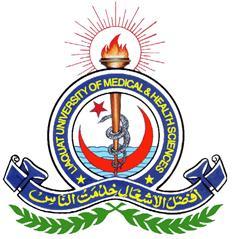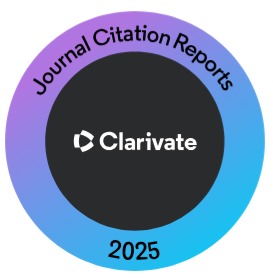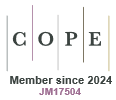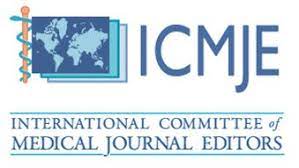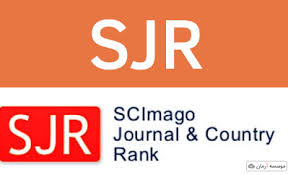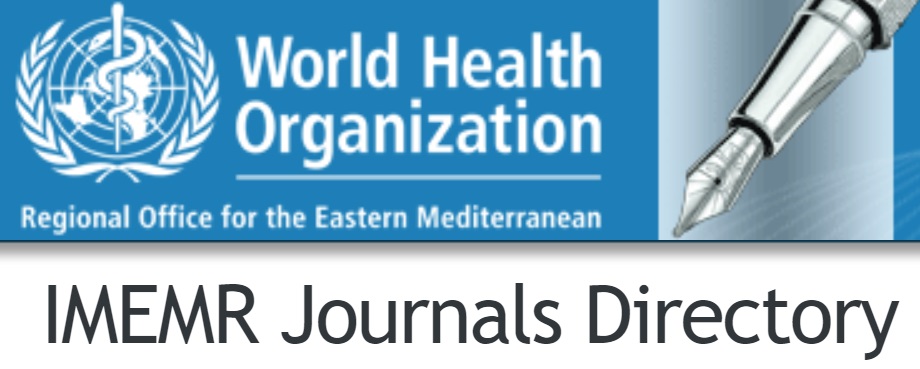Silverman-Anderson Score and Downes Score for Assessing Respiratory Distress in Newborns
Keywords:
Respiratory Distress, Silverman-Anderson Scale, Downes scoring systems, Newborns, efficacy, PakistanAbstract
OBJECTIVE: To compare the effectiveness of the Silverman-Anderson and Downes scoring systems in predicting respiratory distress in newborns admitted to pediatric nursery.
METHODOLOGY: A descriptive cross-sectional study was conducted in the neonatal nursery of Dr. Ruth K. M. Pfau Civil Hospital, Karachi, Pakistan, from July - December 2024, using non-probability consecutive sampling. The study included neonates within the first 24 hours of life of either gender and encompassed both term infants and preterm infants. Respiratory distress was defined by symptoms such as tachypnea, retractions, grunting, or cyanosis. The severity of respiratory distress was assessed using the Silverman-Anderson scoring system, which evaluated upper and lower thoracic depression, subxiphoid depression, nasal flaring, and expiratory grunting, and the Downes scoring system, which analyzed respiratory frequency, cyanosis, chest retractions, grunting, and lung sounds. Data were analyzed using SPSS version 24.
RESULTS: Of 255 patients, the diagnostic accuracy of the Silverman-Anderson Scale in predicting respiratory distress showed a sensitivity of 91.04%, specificity of 63.3%, positive predictive value (PPV) of 46.92%, negative predictive value (NPV) of 95.2 % and an overall accuracy of 70.59%. The Downes Scoring demonstrated higher sensitivity (94.03%), specificity (68.09%), PPV (51.22%), NPV (96.97%), and overall accuracy (74.09%). The area under the curve (AUC) for Silverman-Anderson Scoring was 0.831 (95% CI 0.78–0.89), whereas Downes Scoring achieved a higher AUC of 0.885 (95% CI 0.84–0.93), indicating slightly better performance in diagnosing respiratory distress.
CONCLUSION: While both systems demonstrated high diagnostic performance, the Downes score exhibited marginally superior diagnostic accuracy and predictive value.
References
Yadav S, Lee B. Neonatal Respiratory Distress Syndrome. [Updated 2023 Jul 25]. In: StatPearls [Internet]. Treasure Island (FL): StatPearls Publishing; 2025. Available from: https://www.ncbi.nlm.nih.gov/books/NBK560779/
Chen IL, Chen HL. New developments in neonatal respiratory management. Pediatr Neonatol. 2022 Jul; 63(4): 341-347. doi: 10.1016/j.pedneo.2022.02.002.
Marinhas A, Moinho R, Ferreira S, Maricato F, Carvalho L. Neonatal respiratory distress: A hidden cause. J Paediatr Child Health. 2022 Aug; 58(8): 1447-1449. doi: 10.1111/jpc.15826.
Pramanik AK, Rangaswamy N, Gates T. Neonatal respiratory distress: a practical approach to its diagnosis and management. Pediatr Clin North Am. 2015 Apr; 62(2): 453-69. doi: 10.1016/j.pcl.2014.11.008.
Iskandar W, Rachman HS, Galih VP, Indikurnia FQ, Hafizh MG. Survival of Respiratory Failure within the First 72 Hours in Preterm Infants with Respiratory Distress Based on the Downes Score Assessment. Iranian Journal of Neonatology. 2022 Apr 1; 13(2): 1-7. doi: 10.22038/IJN.2022.59690.2133.
Tochie JN, Sibetcheu AT, Arrey-Ebot PE, Choukem SP. Global, Regional and National Trends in the Burden of Neonatal Respiratory Failure and essentials of its diagnosis and management from 1992 to 2022: a scoping review. Eur J Pediatr. 2023 Oct 17. doi: 10.1007/s00431-023-05238-z.
Zhao YH, Liu YJ, Zhao XL, Chen WC, Zhou YX. Application of two non-invasive scores in predicting the risk of respiratory failure in full-term neonates: a comparative analysis. Zhongguo Dang Dai Er Ke Za Zhi. 2022 Apr 15;24(4):423-427. Chinese. doi: 10.7499/j.issn.1008-8830.2110023.
Shashidhar A, PN SR, Jose J. Downes score vs Silverman Anderson score for assessment of respiratory distress in preterm newborns. Pediatric Oncall J. 2016 Jul 1; 13(3): 66-8. doi: 10.7199/ped.oncall.2016.30.
Dursun M, Zubarioglu U. Respiratory severity score and its association with adverse outcomes in extremely low birth weight infants undergoing invasive mechanical ventilation. Iranian J Pediatr. 2021; 31(6). doi: 10.5812/ijp.117193.
Nayani K, Naeem R, Munir O, Naseer N, Feroze A, Brown N, et al. The clinical respiratory score predicts paediatric critical care disposition in children with respiratory distress presenting to the emergency department. BMC Pediatr. 2018; 18(1): 339. doi: 10.1186/s12887-018-1317-2.
Wick KD, Matthay MA, Ware LB. Pulse oximetry for the diagnosis and management of acute respiratory distress syndrome. Lancet Respir Med. 2022 Nov; 10(11): 1086-1098. doi: 10.1016/S2213-2600(22)00058-3.
Hedstrom AB, Gove NE, Mayock DE, Batra M. Performance of the Silverman Andersen Respiratory Severity Score in predicting PCO2 and respiratory support in newborns: a prospective cohort study. J Perinatol. 2018 May; 38(5): 505-511. doi: 10.1038/s41372-018-0049-3.
Kshirsagar VY, Kshirsagar AY, Mohite RV. Clinical profile and outcome of respiratory distress in newborns admitted in rural tertiary health care centre of Maharashtra, India. Int J Contemp Pediatr. 2019; 6(2): 713-7. doi: 10.18203/2349-3291.ijcp20190715.
Shrestha S, Shrestha SK, Shrestha GS, Dhakal MS. Assessment of hypoxemia using downes score in neonates with respiratory distress. Nepal Med Coll J. 2021; 23(3): 194-7. doi: 10.3126/nmcj.v23i3.40375.
Zhao YH, Liu YJ, Zhao XL, Chen WC, Zhou YX. Application of two non-invasive scores in predicting the risk of respiratory failure in full-term neonates: a comparative analysis. Zhongguo Dang Dai Er Ke Za Zhi. 2022 Apr 15; 24(4): 423-427. Chinese. doi: 10.7499/j.issn.1008-8830.2110023.
Hedstrom AB, Faino AV, Batra M. The Silverman Andersen respiratory severity score in the delivery room predicts subsequent intubation in very preterm neonates. Acta Paediatr. 2020; 110: 1450-1. doi: 10.1111/apa.15671.
Baumert M, Fiala M, Walencka Z, Paprotny M, Sypniewska K. Cesarean delivery and respiratory distress in late preterm and term infants. Cent Eur J Med. 2012; 7: 230-4. Doi: 10.2478/s11536-011-0139-5.
Li Y, Zhang C, Zhang D. Cesarean section and the risk of neonatal respiratory distress syndrome: a meta-analysis. Arch Gynecol Obstet. 2019; 300(3): 503-517. doi: 10.1007/s00404-019-05208-7.
Al Bizri A, Boghossian NS, Nassar A, Nakad P, Jaber D, Chahine R et al. Timing of term elective cesarean section and adverse neonatal outcomes: A multicenter retrospective cohort study. PLoS One. 2021;16(4):e0249557. doi: 10.1371/journal.pone.0249557.
Nakahara M, Goto S, Kato E, Itakura A, Takeda S. Respiratory Distress Syndrome in Infants Delivered via Cesarean from Mothers with Preterm Premature Rupture of Membranes: A Propensity Score Analysis. J Pregnancy. 2020; 2020: 5658327. doi: 10.1155/2020/5658327.
Tsunoda Y, Shima Y, Shinmura H, Kurashina R, Matsushima T, Suzuki S. Neonatal Respiratory Morbidity after Late Preterm, Singleton, Cesarean Delivery before Labor by Mothers Who Did Not Receive Antenatal Corticosteroids. J Nippon Med Sch. 2023;89(6):580-586. doi: 10.1272/jnms.JNMS.2022_89-612.
Rahmawati E, Anggraeni MD, Setiyowati E. Cesarean delivery and respiratory distress syndrome in late preterm infants. Indones J Nurs Sc. 2020; 2(2): 38-43. doi: 10.32734/ijns.v2i2.4969
Bashir J, Ahmed Z, Ghafoor M, Hussain M, Zaman S, Babar MW. Frequency of Respiratory Distress Syndrome in Preterm Infants Delivered at Pak Emirates Military Hospital, Rawalpindi. Pak Armed Forces Med J. 2022; 72(4): 1314-7. doi: 10.51253/pafmj.v72i4.7217
Hanif MI, Ahmed F, Ali SR, Raza SJ. Clinical Outcomes of Neonatal Admissions with Respiratory Distress at Sindh Institute of Child Health and Neonatology: An Observational Study. Pak Pediatr J. 2024; 48(1).
Rajput LS, Khan M. Spectrum of respiratory distress and outcome in neonates admitted in National Institute of Child Health, Karachi, Pakistan. Professional Med J. 2024; 31(05): 769-75. doi: 10.29309/TPMJ/2024.31.05.8043.
Downloads
Published
How to Cite
Issue
Section
License
Copyright (c) 2025 Journal of Liaquat University of Medical & Health Sciences

This work is licensed under a Creative Commons Attribution-NonCommercial-ShareAlike 4.0 International License.
Submission of a manuscript to the journal implies that all authors have read and agreed to the content of the undertaking form or the Terms and Conditions.
When an article is accepted for publication, the author(s) retain the copyright and are required to grant the publisher the right of first publication and other non-exclusive publishing rights to JLUMHS.
Articles published in the Journal of Liaquat University of Medical & health sciences are open access articles under a Creative Commons Attribution-Noncommercial - Share Alike 4.0 License. This license permits use, distribution and reproduction in any medium; provided the original work is properly cited and initial publication in this journal. This is in accordance with the BOAI definition of open access. In addition to that users are allowed to remix, tweak and build upon the work non-commercially as long as appropriate credit is given and the new creations are licensed under the identical terms. Or, in certain cases it can be stated that all articles and content there in are published under creative commons license unless stated otherwise.


